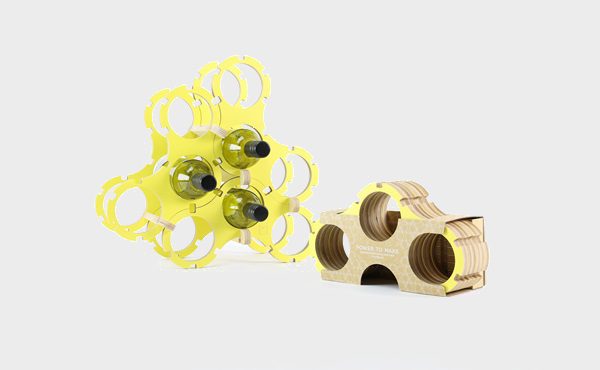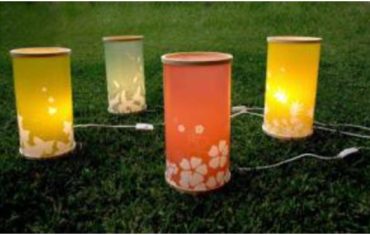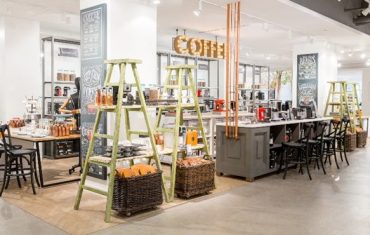Innovative furniture and homewares brand, Power to Make, has released a range of colourful wooden wine racks.
With an interlocking design, users can change the shape of the six bottle rack to suit their needs and even add additional sets for more storage. It is currently available in natural, yellow, grey and black and comes flat packed so is easy to display in store and for customers to transport home.
The products are designed and made in Preston, Melbourne, using technology that allows founders Paul Loh and David Leggett to make a range of objects including chairs, tables and baskets.
As a micro manufacturing facility, Power to Make isn’t restricted to mass producing a single item, and Loh and Leggett are involved in every aspect of the production process from the digital model to the physical object.
“Our ethos is to capitalise on digital technology to produce highly crafted objects which are customisable and yet comparable in price to mass produced items,” explains Leggett. “We believe that good design should be accessible for everyone.”
Aesthetically, the pair is inspired by geometry and loves finding different ways of manipulating materials. They are also interested in producing pared back designs, as can be seen in the Click Stool, a flat packed seat, and Mr & Mrs Wobble, a turned timber plant pot.
“We love Scandinavian design and always try to strip our own design to its essence for a clean and contemporary look.”
After nearly five years in business, Leggett says 2016 is shaping up to be a big year, with the brand expanding its production. “Our biggest challenge is to come up with a new range of products in a competitive market.
“We are expanding our capacity and 2016 will be a super exciting year with new machinery to keep us on top of the game.”
Leggett says Power to Make ensures stockists are spread out so they remain competitive, and looks for retailers that share the brand’s values.
“We enjoy stockists who share our ethos for locally made products, sustainability and contemporary aesthetic.”
By Ruth Cooper







